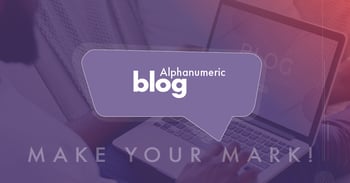
In the modern business landscape, data has become a strategic asset for organizations seeking to gain a competitive edge. Data lakes have emerged as a popular solution for storing and managing vast amounts of diverse data. However, the real challenge lies in transforming this raw data into actionable material that drives informed decision-making and business success. Below, we will explore a holistic approach to merging data lakes, enabling organizations to unlock the full potential of their data assets and derive actionable insights.
The Power of Data Integration
Data integration forms the foundation for generating meaningful insights from data lakes. By integrating data from disparate sources, organizations can gain a comprehensive view of their operations, customers, and market dynamics.
Here are some key components of an effective data integration strategy:
- Data Ingestion: Establish efficient and scalable methods for capturing data from a wide range of sources, including databases, real-time streaming, file systems, APIs, and more. Implement robust data ingestion pipelines that ensure data is collected reliably and in a timely manner.
- Data Quality and Cleansing: Ensure the accuracy, consistency, completeness, and reliability of data by implementing data quality and cleansing processes. Leverage automated data profiling, anomaly detection, and data cleansing techniques to improve the overall quality of data in the lake.
- Data Transformation and Enrichment: Transform raw data into a unified format, harmonize schemas, and enrich data through techniques such as data augmentation, feature engineering, and semantic enrichment. This step ensures that data is in a consistent and usable format for analysis.
Governance and Metadata Management
Effective governance and metadata management are essential for data lakes to deliver actionable material. By implementing robust governance practices, organizations can ensure data privacy, security, and compliance, while metadata management enables data discovery and understanding.
Consider the following aspects:
- Data Cataloging: Develop a comprehensive catalog of data assets within the data lake, including metadata, data lineage, data quality, and access controls. This catalog acts as a central repository for managing and organizing data, facilitating easier discovery and utilization.
- Metadata Management: Establish consistent metadata standards that provide context and meaning to data. This enables users to understand the content, structure, and relationships of the data, improving data exploration and analysis.
- Data Privacy and Security: Implement robust measures to protect sensitive data and comply with regulations such as GDPR and CCPA. Employ access controls, encryption, and data anonymization techniques to ensure data privacy and security.
Harnessing Advanced Analytics
Deriving actionable insights from data lakes requires the application of advanced analytics techniques.
Here are some key considerations:
- Data Exploration and Visualization: Provide interactive tools and visualizations that allow users to explore and understand data relationships, trends, and patterns. Intuitive visualizations make it easier for stakeholders to interpret and communicate insights.
- Machine Learning and AI: Apply supervised and unsupervised machine learning algorithms, natural language processing (NLP), deep learning, and other AI techniques to uncover hidden insights, detect anomalies, predict outcomes, and automate decision-making processes.
- Real-time Analytics: Enable real-time processing and analysis of data streams to derive immediate insights. Real-time analytics allows organizations to react swiftly to emerging trends and make data-driven decisions in a timely manner.
Collaborative Platforms for Dissemination
To ensure actionable material reaches the right stakeholders, organizations must embrace collaborative platforms for effective dissemination and knowledge sharing. Consider the following:
- Collaborative Workspaces: Implement platforms that foster collaboration and enable seamless knowledge sharing among data scientists, analysts, domain experts, and business stakeholders. These workspaces facilitate cross-functional collaboration and enhance the collective intelligence of the organization.
- Interactive Dashboards: Create intuitive and customizable dashboards that provide relevant insights and key performance indicators (KPIs). Interactive dashboards allow stakeholders to explore data, perform ad-hoc analysis, and track progress toward business goals.
- Automated Reporting and Alerts: Disseminate actionable material through automated reports, alerts, and notifications. Timely and targeted delivery of insights ensures that stakeholders stay informed and can take appropriate actions.
Conclusion
Merging data lakes for actionable material requires a comprehensive approach that encompasses data integration, governance, advanced analytics, and collaborative platforms. By adopting this holistic strategy, organizations can unlock the true value of their data assets, drive informed decision-making, enhance operational efficiency, and gain a competitive advantage in today's data-driven landscape. Embrace the power of unified data lakes and empower your organization to turn raw data into actionable insights that fuel success.